How many perfect games have there been in MLB history: What is a perfect game, and how many have there been?
Baseball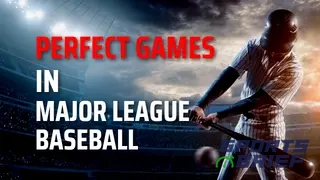
Minor league hockey games do not condone altercations. However, NHL fans and players alike live for throw-downs during matches. Dig in here and discover why fighting is allowed in hockey.

Over the years, numerous athletes have stood out as the greatest hockey fighters of all time. This article will dive into the details of the story and uncover why hockey players are allowed to fight.
The NHL rule book defines an altercation as an event where one player punches or attempts to punch another repeatedly. It also describes it as an altercation between two players who wrestle in a manner that makes it difficult for the linesmen to separate them.
According to the rule book, the aggressor in an altercation is the player who continues to throw punches at his opponent who is unwilling to fight or is in a defenseless position. Also, a player who has clearly won the scrap and continues to throw punches at an opponent who can no longer defend themselves is the aggressor. The aggressor receives a major penalty and a game misconduct.
How many perfect games have there been in MLB history: What is a perfect game, and how many have there been?
Baseball

A player who provokes a throw-down receives a minor penalty, a major penalty for fighting and a ten-minute misconduct. Repeated offenses for an instigator draw heavier penalties. The rules define an instigator as a player demonstrating the following actions that instigate a fight.
A player who demonstrates both actions in a match receives a minor penalty, a major penalty, a ten-minute misconduct and a game misconduct penalty. However, a club can request the League to review or rescind a penalty.

Technically, fighting is disallowed in the NHL. However, it has been an unspoken responsibility placed upon teammates for decades to defend each other. Referees are obligated to penalise any athletes deemed to start a throw-down or persist in continuing the fight.
A list of the best UFC fights in the history of the sport
UFC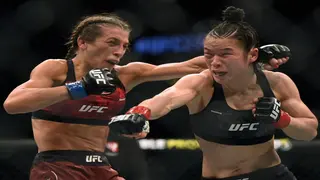
The involved team members drop their gloves before getting into an altercation for safety reasons and as a sign that they are ready and willing to participate in the fight. Typically, scraps between opposing teams will occur in the penalty box.
The referee stops the game before intervening alongside the linesman once the fight is over. The role of the referee is to monitor the fight while the linesman separates the combatants once the fight is over.

In the past, other team members would join in the fight turning it into a full-on brawl. However, rule changes dictate that only the players fighting should remain on the ice while the rest go to the bench.
Willing combatants express their readiness to throw down by dropping their gloves off. Once this happens, the referee sounds his whistle, stopping the game. The combatants enter the penalty box, where the fight will continue until one player hits the ice.
Which are some of the most common injuries in basketball?
NBA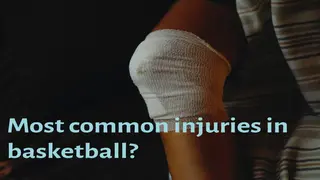
Only professional hockey players in the National Hockey League can fight during matches. In other sports, major and minor league athletes are not allowed to have physical altercations during a game.

In almost all major sports, altercations among athletes draw heavy penalties and thousands of dollars in fines. However, fighting is acceptable in hockey as a means of self-policing matches.
As early as 1922, NHL management had stipulations on fist fighting or fisticuffs on the ice. Although the term is hardly used today, rules governing it are still upheld in the NHL rule book.
Technically, fighting is against NHL rules. In 1922, rule 56 was created by the NHL to regulate player altercations. This was later replaced by rule 46, which controls and monitors fighting among players.
30 of the most hilarious hockey puns to crack your ribs
NHL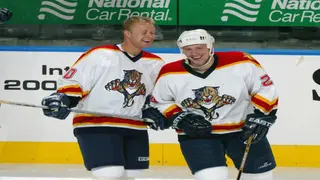
The rule book also stipulates penalties, including a five-minute sit-out from an active game or complete ejection for responsible parties. Harsher penalties include a minor, a major, or a game misconduct penalty, and a fine or match suspension.
A player who instigates a fight in the final five minutes of regulation time or at any time of overtime to receive a minor, a major, a misconduct and an automatic one-game suspension. The NHL rule book also stipulates the following rules.
How to play dodgeball: Rules and regulations of the sport
Other Sports

Recent statistics reveal that scuffles are a part of 17% of all NHL games. In the 2016/17 season, the NHL saw 372 fights in 1230 league games. In the 2018/19 season, the brawls and scrapes among players had reduced to less than 200.
In the past, fights among players took centre place in a game compared to the match itself. During the 1980s, fights occurred in 100% of the games held. It would often spiral into a brawl that involved several hockey players.
In the past, fights among opposing teams took centre place in a game compared to the match itself. It would often spiral into a brawl that involved all team members.
Would you like to find out why fighting is allowed in ice hockey? Scuffles on the rink have been used for years to safeguard the game and minimise conflict.
What is a touchback in football? Definition, meaning and explanation
Football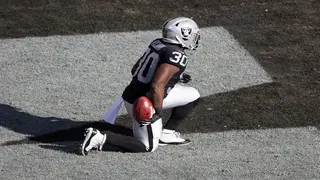
Players hold each other accountable by fighting in a regulated environment and manner. Additionally, scraps increase the entertainment value of the game for fans.
However, the health burdens caused by the scuffles can not be ignored. Daniel Carcillo, a two-time Stanley Cup Champion, retired with irreversible brain damage. The former hockey enforcer, who accumulated a 103-fight record with 394 penalty minutes, spoke to ESPN on the reduced incidence of altercations on the rink. He said,
"I believe this is the new normal, and I think the game is better off without fighting."
Over time, fans and players alike have challenged the NHL on why fighting is allowed in hockey. The reduction of fighting incidents marks a slow end to the injurious culture.
READ ALSO: Finally! Ranking the top 20 worst sports injuries of all-time
Sportsbrief recently published an article about the most horrific injuries that have occurred in various sports over the course of history. The report covers some of the most gruesome injuries in high contact sports such as wrestling, basketball, rugby, football and hockey. Click on the link above to learn more about injuries that have cost players their careers and even their lives.